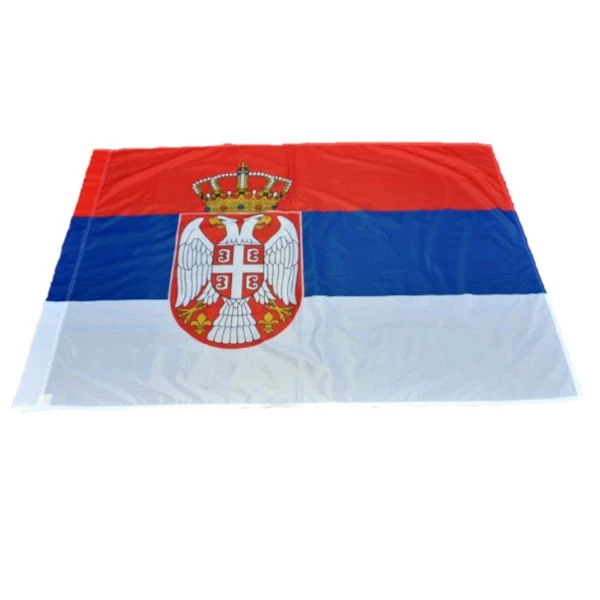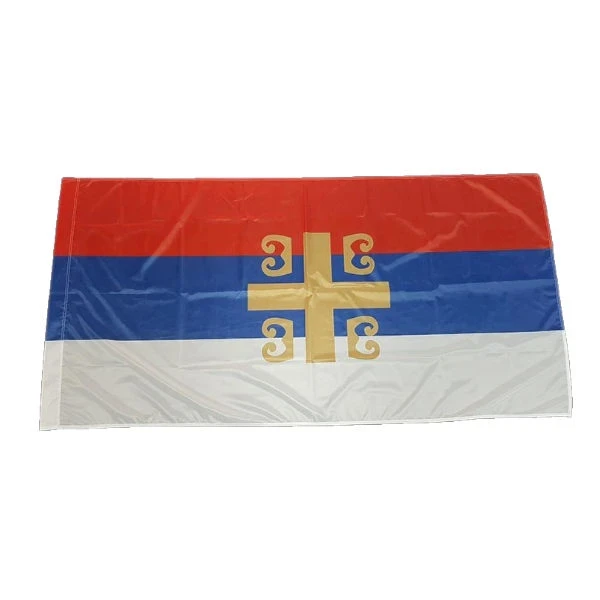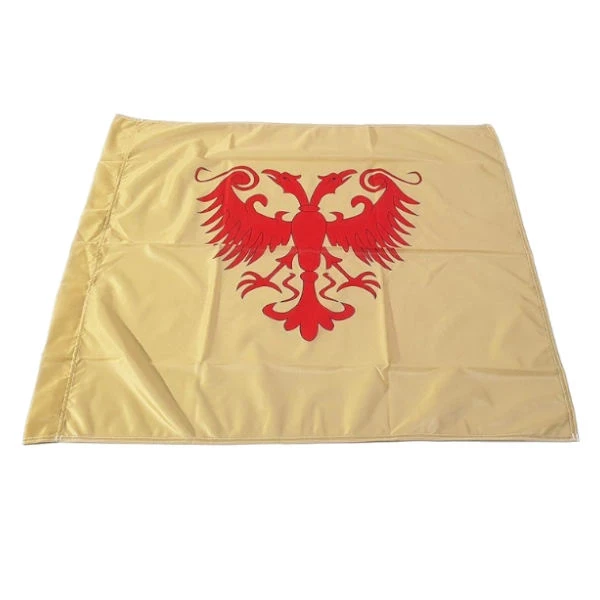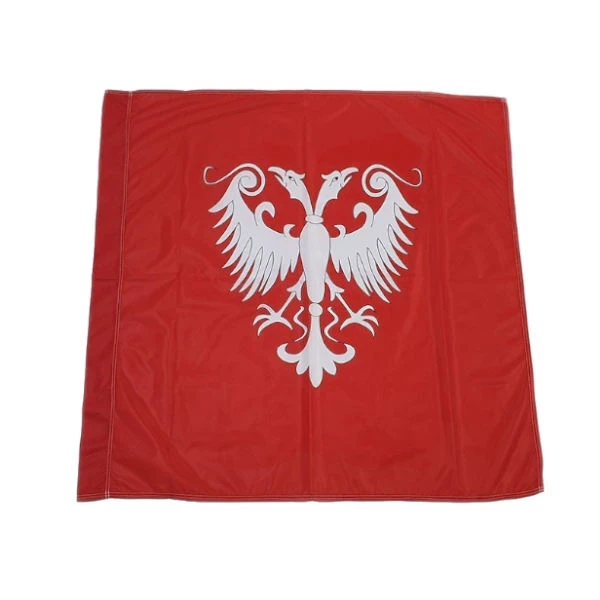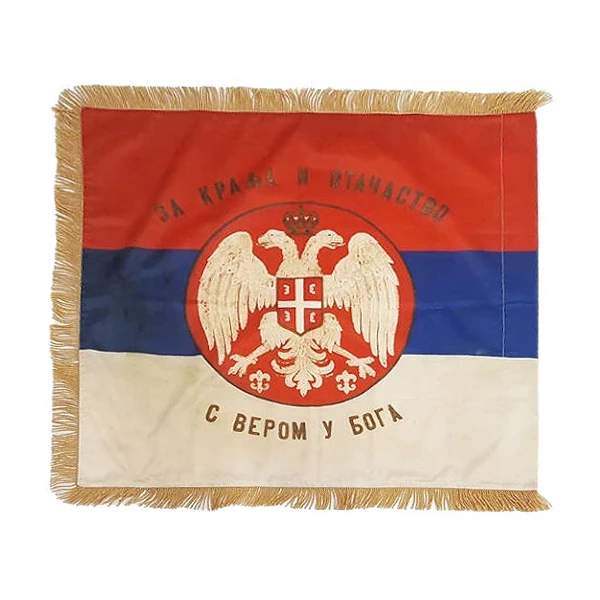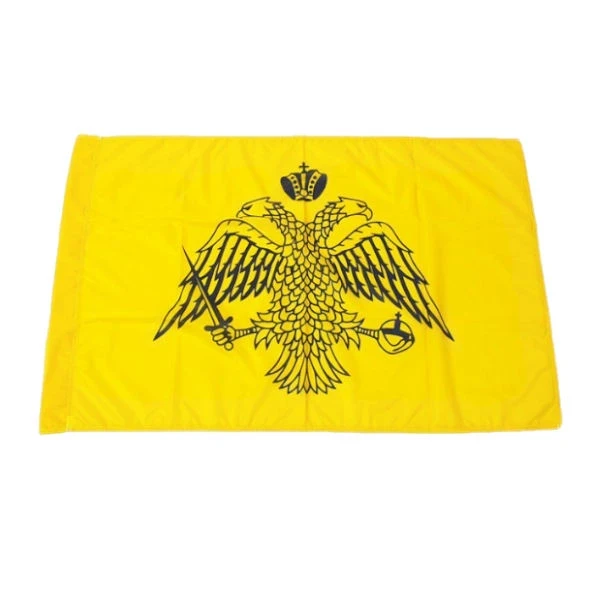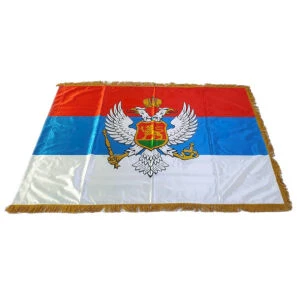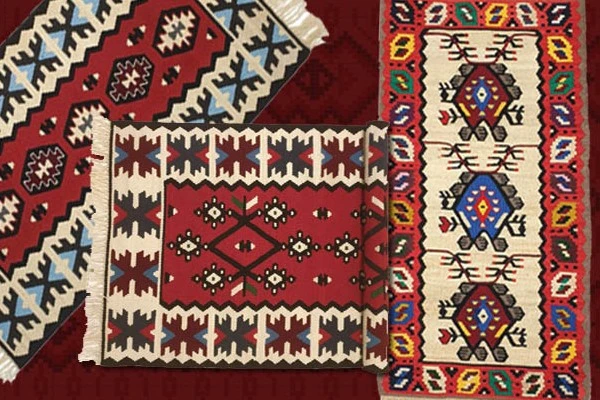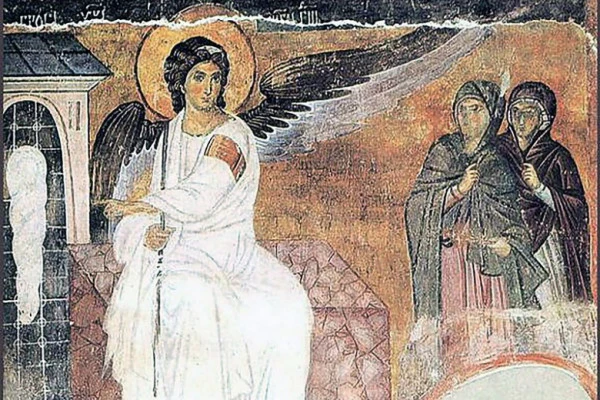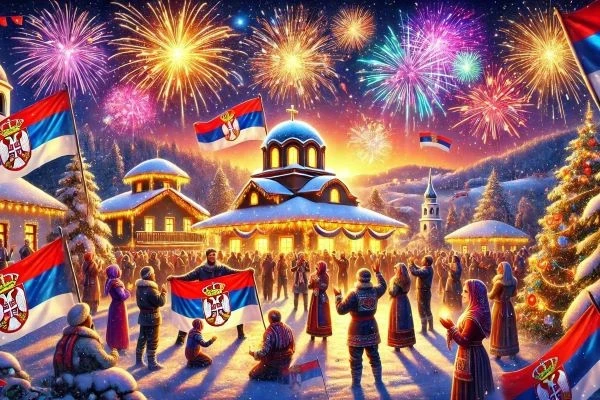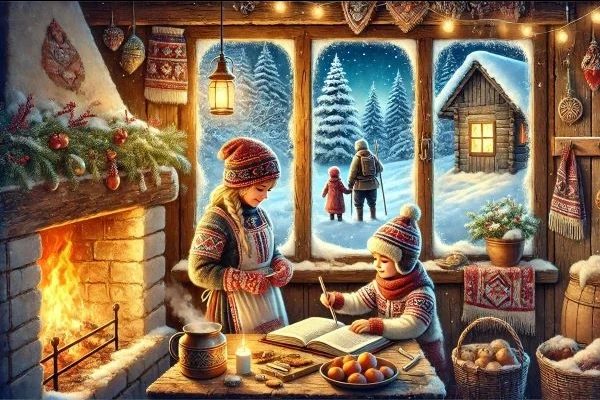- Home
- Blog
- Get to know Serbia
- Serbian flags throughout history - What all Serbian flags looked like and what distinguishes them
Serbian flags throughout history - What all Serbian flags looked like and what distinguishes them
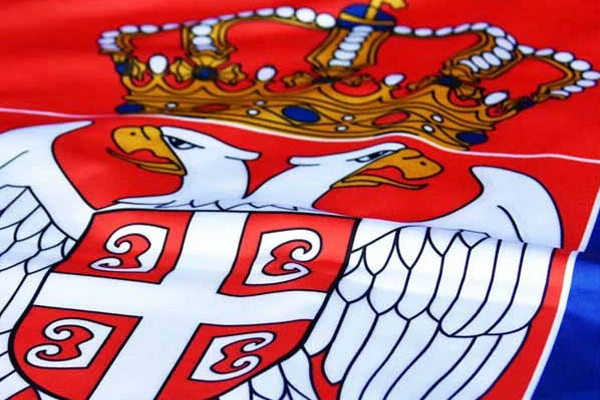
A flag is much more than a piece of cloth – it is a symbol of a nation's identity, history and struggle. The Serbian flag, throughout the centuries, has changed colors, shapes and meanings, following Serbia's turbulent political and cultural past. In this text, we will guide you through all the important versions of the Serbian flag - from the medieval military banners, through the Uprising tricolors, all the way to today's national flag. If you've ever wondered why the colors are red, blue and white, or when the double-headed eagle first appears, this blog provides clear and interesting answers.
History of the Serbian flag
The Serbian flag has a rich and complex history that follows the development of the Serbian people and state throughout the centuries. The first flags were used in the Middle Ages, most often as military banners that bore the symbolism of dynasties and churches. During the Nemanjić period, flags were often decorated with a double-headed eagle and a cross, symbols of Orthodoxy and state power. During the Ottoman rule, Serbs used different flags and tricolors as a sign of resistance and national unity. The modern form of the flag, with red, blue and white colors, became official during the 19th century, at the time of the First Serbian Uprising, and since then the tricolor has been considered a symbol of freedom and independence.
What do the colors on the Serbian flag mean?
The Serbian flag consists of three horizontal fields - red, blue and white, which together carry deep symbolism and historical meaning.
The color red represents courage, the fight for freedom and the sacrifices made by the Serbian people throughout the centuries. This color reminds of the blood shed in defense of the motherland and the desire for independence.
The blue color symbolizes faith, heaven and freedom. It expresses the desire for peace and spiritual strength that accompanied the people through all difficulties and wars.
White color is a symbol of purity, peace and justice. It represents the ideal future, as well as the purity and honesty of the people.
These three colors, in addition to the Serbian flag, are also characteristic of many Slavic nations, which indicates a common historical and cultural identity. Together, the red, blue and white colors on the flag of Serbia express a deep connection with tradition, freedom and national pride.
How was the Serbian flag created? - The fist Serbian flag
The first Serbian flag as an official state symbol was created during the First Serbian Uprising (1804–1813), when Serbs led by Karađorđe wanted to express their struggle for freedom and independence from the Ottoman Empire. That flag was not uniform and had different variations, but the red color always stood out as the main motif, symbolizing courage, sacrifice and blood shed for freedom.
On some versions of the flag there was a double-headed eagle - a symbol of Serbian statehood and connection with the Byzantine heritage, while others carried a cross with four eyes, which is the Serbian national and religious symbol. Insurgent flags were often decorated with popular slogans or prayers that encouraged fighters to persevere and believe.
The first Serbian flag did not have a strict design as we know it today, but was made locally, by hand, which contributed to the diversity and uniqueness of each flag. Nevertheless, its importance is priceless, because it represented the unity and hope of the people in the period when Serbia was fighting for its identity and state.
This flag laid the foundations for the future development of Serbian national symbols and remained a strong reminder of the people's aspiration for freedom and independence.
Flags Through History:
Church flag
The church flag in Serbia was most often marked with Orthodox symbols, such as the cross and icons of saints. It was used in church processions, but also as a sign of church authority and spiritual protection over the people. Its color was often golden or yellow, which symbolizes divine light and enlightenment. These flags were made with special care and were kept as sacred objects.
Flag of Nemanjić
The flag of the Nemanjić dynasty was one of the most important medieval symbols of Serbia. It usually featured a double-headed eagle, which symbolized the imperial authority and the connection with Byzantium, as well as a cross with four eyes, which is one of the most recognizable Serbian symbols. This flag was the pride of the rulers and was used in wars and ceremonies, representing the state and the Orthodox faith.
The flag of Nemanjić has a special historical significance, representing the dynasty that marked medieval Serbia. The flag, which was worn by the kings of Serbia (from the Nemanjić family), was marked with the heraldic symbol of a red double-headed eagle (spread wings) on a golden (and sometimes red) background.
Regimental flag
A regimental flag was the war flag of a particular military unit or regiment. On it were symbols that represented the army, the people and the monarchy. These flags were important for the organization and morale of the army, as well as for the recognition of units in battle. They were often decorated with the coat of arms of Serbia, the name of the regiment and military motifs, and were carried with great honor.
A symbol of military courage and loyalty to the motherland - the regimental flag of the "Army of the Kingdom of Serbia" or the flag of the famous Iron Regiment is a replica of the flag of the Second Infantry Regiment "Knjaz Mihailo" of the first call of the Moravian Division. The original flag ended up as a burial shroud at the funeral of King Peter the First Karađorđević and was buried with him. This flag is made in only one dimension - 75×75 cm.
The Byzantine flag or the flag of Mount Athos
The flag of Mount Athos or Byzantium carries spiritual depth and reflects the religious connection to Mount Athos. When it comes to the flag of Byzantium, there are two features that are used as state symbols throughout the Empire. Namely, in question are Constantine's clamp and the double-headed eagle. Now the flag of Byzantium is presented with a coat of arms consisting of a black double-headed eagle in flight, armed with a sword in the right hand and a shield in the left above which is a crown, on a gold background.
The Byzantine flag, often called the flag of Mount Athos, bears the motif of a double-headed eagle and symbols of imperial power. This flag had a special significance in Serbian tradition because Byzantium was an important cultural and religious role model. On Mount Athos, the center of Orthodoxy, flags of a similar design were used in monasteries and church ceremonies, symbolizing a spiritual connection with the Patriarchate of Constantinople.
FAQ – Serbian Flag
What does the Serbian flag look like?
The Serbian flag is a horizontal tricolor with red on top, blue in the middle, and white on the bottom. The official state version includes the national coat of arms placed slightly to the left.
What do the colors of the Serbian flag represent?
- Red symbolizes the blood shed for freedom
- Blue stands for faith, liberty, and the sky
- White represents peace, purity, and justice
Is the Serbian flag the same as the Russian flag?
No. While both flags use red, blue, and white, the order of colors is different. Serbia’s flag is red-blue-white, while Russia’s is white-blue-red.
When was the current Serbian flag adopted?
The current version of the flag was adopted in 2004, and the coat of arms was officially added in 2010. The design is based on the 19th-century historical tricolor.
What was the first Serbian flag?
The earliest known Serbian state flag dates back to Prince Miloš Obrenović in 1835. It featured red, white, and blue arranged vertically.
What are some historical Serbian flags?
- The Nemanjić dynasty flag featured a red field with a golden double-headed eagle
- The church flag usually had a cross with four firesteels (ocila)
- Byzantine flags influenced Serbian medieval heraldry
- Military regimental flags from wars often displayed religious icons and national emblems
Who can use the flag with the coat of arms?
The version with the coat of arms is reserved for government institutions. Citizens and organizations typically use the plain tricolor without the emblem.
Can the Serbian flag be displayed vertically?
Yes. When hung vertically, the correct order of colors (from left to right when viewed from the front) is red, blue, and white.
What do the double-headed eagle and the cross with four firesteels (ocila) mean?
The double-headed eagle represents the unity of church and state. The cross with four firesteels symbolizes the famous national motto: “Only Unity Saves the Serbs.”
Related products
Read also
How to wash a pirot carpet - 5 steps to a perfectly clean and fragrant carpet
Traditional Serbian carpets are a valuable family heirloom. They refine and…
White angel - the purest symbol of the Serbian people
Frescoes represent an artistic segment of religion and as such occupy a special…
Serbian flags throughout history - What all Serbian flags looked like and what distinguishes them
A flag is much more than a piece of cloth – it is a symbol of a nation's identity,…
Who was Saint Sava and what was his contribution?
"Saint Sava: A Beloved Serbian Saint with a Rich Legacy and Cultural Significance"
…Serbian New Year: Tradition, Customs and How to Celebrate it
The Serbian New Year, also known as the Orthodox New Year, is celebrated on…
Gifts Inspired by Serbian Culture: Authentic Ideas for the Holidays
The holidays are a time of giving, and finding the perfect gift is often a challenge.…
Traditional Serbian Christmas Customs: How to Cultivate Them in Modern Times?
Christmas is the most joyous holiday in Orthodox Christianity, a time when families…
How to Bring the Spirit of Orthodox Tradition into Your Home This Winter?
Winter is the perfect time to bring warmth, togetherness and the spirit of Orthodox…
Serbian Souvenirs: Perfect New Year's Gifts for All Tastes
New Year is the time of giving, and what is more beautiful than a gift that…
How to stay productive and not waste an entire day on Black Friday shopping
Black Friday is a day full of amazing discounts, but it can easily become exhausting…
Folk Beliefs and Customs for Saint Aranđel - Assembly of Holy Angels
Saint Michael the Archangel, who is celebrated…
Folk Beliefs and Customs for Đurđić - Glory of St. George
Đurđić, the feast of St. George, celebrated on November 16, is one of the most…

Apply for newsletter
Sign up for the Serbianshop newsletter and get a 10% discount.


